An Introduction To Three Nambikwara Ethnohistories
1 CommentJanuary, 2019: Edwin B. Reesink – Allegories of Wildness – Three Nambikwara ethnohistories of sociocultural and linguistic change and continuity – Rozenberg Publishers – ISBN 978 90 3610 173 8 – 2010 – will be online soon.
International fame for the Nambikwara came from the central role they play in the work of the late Claude Lévi-Strauss. In his most popular book, Tristes Tropiques, over fifty years ago, he already had painted a particular picture of the Nambikwara way of life. Until the end of his long life this great scholar reminisced about his formative years in anthropology and the influence of the several Indian peoples he encountered during his travels in the interior of Brazil. In effect, the Nambikwara, as seen in the quote, occupy a special place, one not just of scientific interest but particularly one of a sympathy and feeling sometimes not readily associated with this anthropologist. At the time of the travels by Lévi-Strauss and the other people of his expedition, the dry season of 1938, the Nambikwara happened to be in an intermediate phase of their history: enjoying their political autonomy yet already shaped and devastated by the encroachment of Brazilian society.
The sparse, intermediate but regular contacts with Brazilians made them susceptible to being devastated yet further by epidemics. Previously, from 1907 onward, the Brazilians by means of the so-called Rondon Mission penetrated into the vast territories in which lived a large number of different local groups who each considered themselves to be different from their neighbours. Rondon, the State and later researchers recognized this diversity but ultimately still tended to maintain the idea of “one Nambikwara people”. Rondon’s purpose was to build a telegraph line to the Madeira River and hence to connect Amazonia with the rest of the country while, concomitantly, preparing to take possession of an enormous territory inhabited by a number of independent peoples. Rondon and some of his people succeeded in establishing a pacific relation with a number of local peoples of the Nambikwara ensemble: mainly those of the Parecis Plateau and north of Vilhena (in what is now Rondônia).
*
All I can say to you is that the few months I spent among the Nambikwara may have been those I retain the best memories of, among all of the contacts I had with other populations in Brazil. (…) there has been no Indian population I have known that has attracted so much and with whom I felt so close.
(Lévi-Strauss; from interviews with Marcelo Fiorini, end of 2004 and beginning of 2005, published in Ethnies nr. 33-34, pp. 108-9; my translation).
*
The building of the Telegraph Line and the establishment of stations and agricultural activities to support the annual expeditions and the posterior sustenance of the people manning the telegraph posts, already meant a significant penetration into their lands. The best known Nambikwarist, the late David Price, estimated the overall territory of all local peoples at this time to have been some 500.000 square kilometers, something like the size of France. One might say that the actual land taken in the beginning represented a very small amount of this total. However, the peaceful relations established with a few villages already implied that contagion of unknown diseases would necessarily follow. The very fact that Rondon represented the Republic – that is so-called “national sovereignty” – when he penetrated these lands and simply took possession of what he needed is also highly significant. The Line was a line of colonialist penetration initiating the expropriation of natural resources and potential genocide which such a venture always engendered. Rondon knew he was entering the homelands of another people and, being uninvited, felt violent reactions against him and his subordinates were justified. Hence he was determined not to retaliate and to find ways of establishing and maintaining friendly relations. Yet there was never any doubt that the Republic came first and was entitled to take factual possession of what “already belonged” to it. On the other hand, Indians were people, and precisely because of that human condition could be elevated to higher levels of “civilization”, even to be “citizens”: if the Republic subtracted territory from “its Indians” then it should take care of them by “civilizing” these people and, for example, by “educating” such “semi-nomads” so they could henceforth live comfortably in the very much smaller area that was to be magnanimously granted to them by the State. At the end of his life Rondon is said to have regretted his actions as they did not produce the beneficial effects he expected. If so, he was right in the end. The official State policy of civilizing did neither work in the expected way nor offer real benevolent protection against the greed of colonialist expansion and expropriation of territory, tremendous riches and wealth by Brazilian society. Nor against genocidal practices, sometimes even promoted – camouflaged but real – by the State itself. Only very recently in history the legal protection became more efficient, recognized ampler territorial rights and expanded to include cultural and linguistic rights. Needless to say that Brazilian society in general still holds on to evolutionary and ethnocentric views that demote Indian peoples to either innocent or brutal savages. And, even today, for what seems to be the great majority, these abstract “Indians” are granted far too many rights when they are held to be standing in the way of “progress”.
Name
Naming, as is well known, is not just simply a way of referring to objects or people. One does not only “name” a people, one actually specifies something of what these named objects are supposed to be. As far as known, Rondon never explained why he named the Nambikwara as Nhambiquara. Maybe he listened to his Paresi guides (who may have called them such), but perhaps he wanted to disassociate the people he wanted to pacify from the so-called Cabixi Indians. It is quite certain that segments of the current “Nambikwara” had already been named in previous encounters in earlier centuries, but the name that emerged from the 19th century was “Cabixi”. These Indians had reconquered the lands of the Guaporé Valley from the settlers that remained after the gold in the local streams had been exhausted. They even threatened Vila Bela, the first capital of the province of Mato Grosso, a town that came into existence with the gold rush in the first part of the 17th century. These Indians were held to be ferocious and atrocious by the regional population who generally appear to have had an enormous dislike of these “savages”. It is true that Rondon traversed the region north of the Guaporé Valley and no one succeeded in establishing friendly relations with any of the villages in the Valley in his time (even though his agency to deal with Indians, the SPI – Indian Protection Service – later tried to do so for several years). Which local groups and peoples actually were included in these Cabixi remains uncertain, but Rondon must have thought the groups whose territories he crossed did belong to the “same nation”: he apparently found a family resemblance of “nakedness” and sleeping in the sand beside a fire that extended from the Cabixi to all places the Line crossed in Nambikwara lands. The Paresi name for their neighbours did the same for it indexed their foremost and unique trait of not sleeping in hammocks (“Those who sleep on the ground”; in Paresi eyes a very primitive practice). And so, while Rondon recognized the differences among the different peoples, even to the point of sometimes calling them “peoples”, he renamed them all as the “Nambikwara Nation” because they all seemed to share in this supposedly most “primitive” poverty. Nambikwara is usually explained to be Tupi for “pierced ears” and the name had been in use for a different people to the northwest of the Cabixi. Maybe he thought they deserved a new chance under a new name. He did search the refuse of an abandoned village in order to establish, to his evident relief, these people were not that low on the evolutionary scale as to be “cannibals”.
Names sometimes rather produce peoples than merely recognize a state of being. If Rondon recognized significant differences between local groups of different regions, he still classified all as Nambikwara, as in the sense of ultimately being one. In this sense there has been and still is a tendency to call all of the diverse segments that consider themselves in some way as different – a local village or, in historical times, a regional cluster of contiguous villages – with the all encompassing term “Nambikwara” (here indicated as the Nambikwara ensemble). In Tristes Tropiques, for example, the author noticed how partialities like the Sabanê and Tarundê spoke mutually unintelligible languages. Despite this enormous difference he concluded from Brazilain practice and from what he learned in the field that they shared the same culture and hence included all villages and the named units he himself encountered in an entity named Nambikwara. However, these named units did not really agree, even after the ravages of history. Lévi-Strauss described the tremendous demographic losses already suffered at the time of his expedition. Afterwards further epidemics and outside interference caused tremendous loss of lives and, as far as known, all the regional clusters of a number of villages had to coalesce into one village in order to maintain a viable social organization. That means, of course, that a number of village clusters who considered themselves as being different from similar clusters were extinct and all of these clusters in some way merged into new social units. One might say that the currently present and named peoples who actually compose the Nambikwara ensemble resulted from the encirclement initiated by Rondon. There are clear boundaries that separate peoples like the Sabanê, Mamaindê, Sararé and others, and none of these considers itself to be Nambikwara except one of them. That is, in regional usage, certain coalesced local groups or regional clusters on the Parecis Plateau have been termed as “Nambikwara”, and they consider themselves as the Nambikwara. There may be some justice or historical reason for this as Rondon first penetrated their lands and finished and consolidated the Line in one or two years before moving on to northern peoples of the Nambikwara ensemble. That implies that the second major language area invaded by Rondon was the cluster of languages now called Northern Nambikwara.
Today linguists classify the Nambikwara language family as having two linguistic clusters of languages and one separate language: the Northern branch, the Southern branch with two major sub-clusters and the, more divergent, Sabanê. The “Nambikwara do Campo” or “do Cerrado” (something like ‘Savanna Nambikwara’; the cerrado is a major ecological habitat in Brazil) hence retained the name originally bestowed on all of these different partialities. Although it must be noted that even here other segments of this area now are known under different names – Kithaulu, Manduca – and that these are considering themselves to be different peoples. The peoples on the Plateau are linguistically a sub-cluster of the Southern Nambikwara cluster, the other sub-cluster consist of those segments located in the Guaporé Valley. Rondon stayed north of the Valley and the changes suffered by invasions in different historical moments generated divergent historical trajectories. The northern cluster actually begins in the northern part of the Valley, also located to the south of the westernmost peoples of the Plateau. That part of the North being located principally in the Valley hence suffered a somewhat different encroachment then the main part of the Northern Nambikwara cluster (outside the Valley and to the north of Vilhena), which was the area penetrated by Rondon. It must be noted that the total territory around 1910 commenced in the south near the upper Guaporé River, included the Valley to the north until the other side of the Cabixi River, extended itself north parallel to the Valley on an huge part of the Parecis Plateau and included its extension to the north of Vilhena where it entered the forested transition zone to the properly Amazonian habitat. According to Price this consisted of 500.000 or even 550.000 square kilometers of territory, every part of it inhabited by local groups constituting, in all likelihood, at least several villages (and then, usually along a river and its basin, constituting regional clusters). These territories, as said totalling something like the size of France, had been penetrated in times before Rondon, especially the southern Valley near Vila Bela do Mato Grosso where there had been a gold rush in the early 17th century, and a number of geographical features already were named. However, the crossing of the other sub-cluster and the Northern branch by Rondon caused him to name everything himself; sometimes naming a river with a positivist inspiration that was his life’s creed, sometimes even renaming rivers with regional names already in use. Rondon hence took symbolically possession of the land in the name of the Republic. No local Nambikwara names were, as far as I know ever used even though, evidently, the whole territory was mapped and named by the Nambikwara peoples in their diverse languages. Possibly the high point of the naming process occurred when the Roosevelt-Rondon expedition explored the so-called “River of Doubt” (the geographical doubt being one of Rondon and his team), solemnly renamed Roosevelt River during the expedition by order of the central government: descending the river the lower parts were inhabited by rubber tappers and the river, of course, already did have a name. These people did not in any way doubt their geographical position and the name of their river, but in the end the official name prevailed.
In a sense the process of naming relies upon a view of reality. The view of the Republican and positivist Rondon implied that naming all features and human groups was a kind of indispensable condition for their existence within the framework of the State. One of the interesting things about the Nambikwara ensemble, on the other hand, is that the constituent partialities do not name themselves the way they like to name the other distinct segments. This represents a view of marking the distinctiveness of others that may be interpreted as transforming what initially might be thought of partialities of a kind of unit into something that may be called peoples. That is, you do not name your own people, they are simply, in the words of Price, “a Nambikwara Person” (and marking others by naming appears to entail the association of being a somewhat less than complete “Person”). There may be an exception to this in the name of the Sabanê for themselves, Kulimansi. This still needs confirmation although it is certainly a possibility as the Sabanê language is the most divergent of the Nambikwara family, different from the Northern and Southern clusters, and other relevant sociocultural differences existed in previous times. Price verified, in a visit to a recently contacted village, in 1977, that, according to his northern Nambikwara translators who spoke a very closely related language, the people of the village did not possess a name for themselves. Of course, such a state could not endure, as the previous designation of “Forest Indians” used by Funai before “contact” was not considered to be a “real name”. Furthermore, there is a definite trend in later times to ‘indigenize’ the names of Indian peoples – i.e. an ethnonym to look “Indian” –, and in this case the small group became known as Latundê. Only in this instance Rondon himself tended to follow the Nambikwara names themselves. At least that was what his people seem to have tried to do. However, many names from the time of Rondon simply meant an answer to the question put to a nearby Indian: what is the name of the people who are arriving? With an answer like ‘My younger sister is coming’. This kind of situation was very much prone to miscommunication because neither party spoke the other’s language. The kin term sapané (younger sister in the Sabanê language) may have been used in response to a question to identify a group of Sabanê and then was extended to include the whole people. Other names derive from geography, as the Sararé, the river of the southernmost people of the Valley. In some cases Funai wanted to change such an ‘un-Indian’ name, in the this particular case to Katitaulu. However, such a name originally was given to one the local groups that were forced to coalesce into the “Sararé”. And it is speculated by Price that the name derives from the Portuguese word for captain. Names may contain their own ironies.
Fame
 At least some, but probably most or all, of the peoples to be called Nambikwara came into some kind of contact before Rondon. Documents attest to the fact that from the early 17th century onward the colonial society ventured to engage in conquests and expeditions in their territories. It remains unclear if the larger Nambikwara territories included the area of the gold rush, the southern part of the Valley but it seems certain they occupied the middle ranges where they maintained strenuous, apparently inimical, relations with communities of runaway slaves (who stole most of their women from neighbouring Indians). It is also speculated that the Paresi suffered so much from slave raiding in the same century by bandeirantes – the famous expeditions from São Paulo ranging enormous distances in search of gold, diamonds or slaves – that Nambikwara segments may have occupied the new vacant space on the southeastern part of the Plateau. What is certain is that the 19th century saw the conquest or re-conquest of the southern Valley by Nambikwara segments that currently are known by the name of Sararé. The region had been occupied with small villages where agriculture had substituted the gold mining. The Indians, known as Cabixí, slowly expulsed the invaders and even threatened Vila Bela, former capital of the state. At this time it is unclear who exactly are the Cabixí, as the term may have referred to any group of hostile Indians and simultaneously was used for a division of the Paresi (the hierarchically inferior of its three segments, partialities that are keenly felt to be different by those Indians). According to a description by Max Schmidt one might deduce that at least a part of this confusion may have resulted from a mechanism of incorporating Nambikwara of the Plateau into the Paresi-Cabixí (while the Nambikwara territories may even have expanded farther south than the limits given above). Be that as it may, it is probably correct to surmise that the total of Nambikwara territories was at its largest, or at a point of one of its largest expansions, when Rondon endeavoured to construct the Line.
At least some, but probably most or all, of the peoples to be called Nambikwara came into some kind of contact before Rondon. Documents attest to the fact that from the early 17th century onward the colonial society ventured to engage in conquests and expeditions in their territories. It remains unclear if the larger Nambikwara territories included the area of the gold rush, the southern part of the Valley but it seems certain they occupied the middle ranges where they maintained strenuous, apparently inimical, relations with communities of runaway slaves (who stole most of their women from neighbouring Indians). It is also speculated that the Paresi suffered so much from slave raiding in the same century by bandeirantes – the famous expeditions from São Paulo ranging enormous distances in search of gold, diamonds or slaves – that Nambikwara segments may have occupied the new vacant space on the southeastern part of the Plateau. What is certain is that the 19th century saw the conquest or re-conquest of the southern Valley by Nambikwara segments that currently are known by the name of Sararé. The region had been occupied with small villages where agriculture had substituted the gold mining. The Indians, known as Cabixí, slowly expulsed the invaders and even threatened Vila Bela, former capital of the state. At this time it is unclear who exactly are the Cabixí, as the term may have referred to any group of hostile Indians and simultaneously was used for a division of the Paresi (the hierarchically inferior of its three segments, partialities that are keenly felt to be different by those Indians). According to a description by Max Schmidt one might deduce that at least a part of this confusion may have resulted from a mechanism of incorporating Nambikwara of the Plateau into the Paresi-Cabixí (while the Nambikwara territories may even have expanded farther south than the limits given above). Be that as it may, it is probably correct to surmise that the total of Nambikwara territories was at its largest, or at a point of one of its largest expansions, when Rondon endeavoured to construct the Line.
The Nambikwara as Cabixí, or by whatever name they were known, were definitely viewed as some of the most intractable and worthless savages. And accused of being cannibals, the lowest sort of human beings possible (if considered human; many Brazilian catholics viewed an un-baptized person as not really human). In this sense, if Rondon or his men succeeded in contacting them peacefully, then any “wild tribe” could be led to accept contact with “civilization”. The glory and fame of incorporating large tracts of land within the actual reach of the Republic, revealing its geography and peoples, was well publicized and contributed both to the prestige of Rondon and to support the founding of a special agency to deal with Indian affairs (the “Serviço de Proteção aos Índios” – SPI, Agency for the Protection of Indians). By the way, the original tasks of the agency included colonization to the benefit of “agricultural labourers”: “civilizing” the Indians meant “settling” them, “teaching” new agricultural techniques and thus also a much “lesser need of lands”. The ‘liberated’ lands could then be used to settle national labourers. But then, to many “civilized” people the Indian’s own future was to become another “useful hand”, an agricultural labourer, explaining the conjunction of tasks in an evolutionary light. The SPI certainly did not live up to these expectations. They did not succeed in “pacifying” the peoples later to mesh into the Sararé, as these maintained a fierce independence after the conquest of the southern Valley. The SPI also did very little to further the interests of those peoples contacted. In fact, all contact was left to the Telegraph Stations and these became obsolete with radio and entered into a thorough decline. On the Plateau, the Cabixí River and to the north of Vilhena the situation called “contact” produced deleterious demographic effects. Lévi-Strauss and Castro Faria (who turned into a well-known anthropologist in his own right in Brazil) hence followed a very decadent Line and encountered an independent but thoroughly devastated Nambikwara ensemble. And the later fame of Lévi-Strauss shaped an ethnographic image for the whole ensemble that actually occurred on the savannas of the Plateau (although in actual fact a large part of his information was obtained among a northern group but these resided at the time around Vilhena and that area also consisted of a kind of “campo”). The Valley, with its large forested areas besides the open areas, was unknown and the expedition spent little time in the more forested areas of the north. It may be said that the ethnographic image certainly derived from observations and his fieldwork, but later fieldwork under better conditions corrected the famous picture drawn by Lévi-Strauss. Evidently, these corrections appear to be unknown among the general public as they circulated in professional journals and are in no position to compete with the famous book.
After the expedition the beginning of World War II rekindled an interest in the region: a search of sources of rubber needed for the War effort. From the middle Valley onward, Nambikwara territories suffered invasions. In the Valley certain local groups gave up their normal planting practices because tappers attacked them and simply stole the Indian’s crops. Normally no Nambikwara people lived without horticulture and in their own minds all of the peoples of the ensemble consider themselves to be of a sedentary disposition and living in villages, not being nomads at all. In 1942 the SPI founded a Post in the only small area officiously reserved for the “Nambikwara”, called Pireneus de Souza, close to Vilhena. The representative installed tappers in the area to “produce” rubber and imposed a strict work regime upon the Indians he succeeded in attracting and who came to live at the Post. Significant parts of peoples like the Sabanê and Tawandê lived here under a regime of forced labour, producing food crops that fed the tappers dedicated to collecting the rubber. A kind of petty domination that, however, in the last instance, was founded upon the use of violence: when, at one time, the Sabanê fled to the forest, an expedition went after them and returned them to the Post by force after murdering some of the leaders. Some autonomous Sabanê remained in the north and the telegraph stations in the north still functioned to attract inhabitants and as a precarious channel for exchange of industrial goods. At the same time the Sararé maintained a state of war and independence. In the 60’s these situations ended and major changes happened. On the one hand, a new impulse to “integrate the interior” led to a new, unpaved, road on the Plateau, going through Vilhena to Porto Velho. This augmented the pressures upon all peoples. At the end of the decade the stations of the Line in the north were abandoned due to mounting attacks of the Tupi Mondé peoples from the north. The people officially employed were removed to the other side of the state, all autonomous villages ceased to exist and the survivors went to live close to the new road (in an area known as Marco Rondon), dispersed into the regional society or went to live in other Indian villages. In a word, the whole area north of Vilhena was taken over by the Cinta Larga. Only those peoples of the Northern cluster in the Valley remained in their home ranges.
The SPI Post also was practically abandoned at the time this agency floundered, submerged in all sort of scandals mistreating Indians (at the end of the 60’s). It was then refounded and renamed as Funai. Around this time the official went to live on a private property, taking with him a number of people, especially Tawandê, to work for him and his daughter. A few remained in the old village, others dispersed. In the south the local groups of the Sararé region could not wage a permanent war against ever increasing forces and some villages decided to enter in peaceful relations with the regional society. One of these first contacts, a protestant missionary, did attempt to provide assistance when diseases hit the region but in general the Funai was not involved and in the end his efforts did not avoid another demographic catastrophe. Some three local groups in the Sararé region did not survive until the mid 70’s, one was reduced to one or two people when they, and all the others of all of the different groups, had to coalesce into one village in order to maintain a socially viable village. The decade of the 70’s became known as the time of the “economic miracle” and the dictatorship wanted to “accelerate” the “integration of the Indian” into as little time as possible. The actions of Funai normally were totally subordinated to “national interests”, meaning Brazilian, capitalist and higher class interests and the Indians were – in the name of “progress”, evolution and “to their own benefit” – invited to donate most of their lands and all of their labour. The “peaceful encirclement” proposed by Rondon turned into an encroachment that almost expropriated all but a small part of the Nambikwara territories. Around 1969 the federal government demarcated an apparently large section on the Plateau for the exclusive use the Nambikwara. In effect, this “Nambikwara reservation” contained something like one-fifth of the original homelands of the ensemble, all of it, however, on the Plateau consisting almost all of the land of what was generally thought to be “useless cerrado” (savanna). Ironically, today the adjacent region of cerrado is one of most productive areas of soya beans (also note, however, that part of this large region still was expropriated from Nambikwara peoples). All of the other peoples still maintaining their own territories, especially in the ecologically still rich Valley, were supposed to be “one people” and hence could be relocated to this entirely different ecological zone without qualms. Not surprisingly, those peoples who were, somehow, forced or induced to relocate could not adapt to living in a quite different ecological zone and were very much aware of the fact that the land did not belong to them but already was “owned” by a distinct people. All relocated peoples eventually found their way back to their own homelands. Local peoples actually not only deny being nomads, they also profess a deep attachment to their homelands.
This decade gained the Nambikwara their last fame: images of hungry Indians circulated to denounce the official policy. For example, returning to their homelands some people found their land occupied by ranchers, and in one case even cattle eating their houses. Even David Price at that time underestimated the attachment to the land. However, when many of the Nambikwara ensemble were “before the bulldozer” (as he titled his book about this period), especially in the rich Valley, a short spell of some room for anthropologists within Funai enabled Price to develop the “Nambiquara Project” (around 1974-1975). In retrospect, the Project and its innovative different approach to bring better healthcare meant a turning point in demography. For example, the Sararé, reduced to less than 40 persons, finally began their demographic recovery, making a comeback from the brink of complete extinction. The Sabané were living dispersed or, partially, in Marco Rondon outside of their home territory when the Project proposed to establish a new village in Pireneus de Souza. The idea was to unite the scattered fragments of the northern peoples who used to live north of Vilhena. The new village made for the abandonment of Marco Rondon, an area with superior soils rather better than the land at the new location, but the movement did have the advantage of uniting many previously scattered and dispossessed members of the Sabanê and northern peoples like the Tawandê. It must be noted that, under the circumstances of very severe constraints, this policy was probably justified even though this still entailed abandoning all other sites and settling in an ecologically poorer area actually owned by a people of the savanna. It must also be observed that an uncertain but significant number of people remained in the regional society, to the detriment of sociocultural vitality and linguistic maintenance (like the people relocated by the Line, very few of whom returned to the Nambikwara areas). Overall the northern peoples and the Sabanê originally inhabiting the huge area to the north of Vilhena suffered the total loss of land and autonomy and only started to improve their material situation in the new area, locally called Aroeira.
Fate
From the above very rapid sketch of the relations between Indian peoples and the agencies of the state officially entrusted with their care it will be obvious that such duty effectively did not materialize on the local level. The Nambiquara Project stands out as the one instance in which a serious and efficacious assistance actually produced favourable results, even though the Project was plagued by financial and bureaucratic obstacles. The forced removal of Price did cause further problems and later he mentioned possible accusations of corruption by the person who took his place (but the permanence of his local agents proved vital). The same person took the responsibility for the “attraction” of the Latundê, but in actual fact seems to have left a totally unprepared regional labourer in charge of the real first contacts. This small people counted somewhat over twenty people at the time of first peaceful contact. Between one visit and another someone already died, apparently from contagion at the occasion of the first visit. The labourer in charge thought he should “civilize the primitive Latundê” at the site of a nearby already established Indian Post (inhabited by a completely different people). Such totally inappropriate policies were commonplace in this period. Hardly any real measures of protection were taken and the people were not vaccinated against diseases known to kill uncontacted populations for almost 500 years. This absolute failure led, in the early 80’s, to the death of the most important people of the elder generations, some of whom had refused to stay at the Post. One of the two most important older men had returned to his own territory, taken his two small sons, in order to live independently and in his own way of life. The social nucleus of the two foremost reproductive couples was wiped out in the end. It is easy to see that such negligence is criminal and is tantamount to a mode of genocide. The effects were devastating. Someone induced a man from the Tawandê – grown up at the private holding of the official mentioned before – to marry the young girls that had come to age about this time. A Funai report states that, for a while, the two newly formed families refused to have children (one consisting of the incoming husband with two wives). Later on they changed their minds and a number of children were born that gradually elevated the number of living Latundê: up from some 11 to around 20 people.
In sum, the smallness of the group led someone to intervene and introduce a stranger to marry the three eligible girls, sisters, there being only one compatible man available in the group itself and he ended up with one of them. Events of criminal negligence eliminated the foremost leading couples, including the shaman, and left the group disoriented. Hence the apparently strange consequences of this intervention: a man who was stolen from a group similar to the Latundê, who was then adopted and grew up among the Tawendê group working for the old SPI agent imposed the Brazilian Portuguese language upon the group and also heavily promoted Tawendê cultural practices (for example, a ritual with a kind of flute which the Latundê did not use). That is, he tried to impose a language he himself only commanded within considerable limits. His eldest wife resisted, but in the end relented, even though her command until today is very limited, and so their children came to speak a sort of Latundê Brazilian Portuguese. In effect, it became an unique variant only spoken by this people. The children did not learn to speak normal Latundê, acquiring a passive competence and a varyingly limited active command. It is only when the children reached an adolescent to adult age that the older generation insisted and taught the Latundê language in order to achieve some, hopefully, normal kind of active speaker level. It will be clear that the totally insufficient, initially criminal, negligence of Funai contributed to this rather odd linguistic situation. After their elders died and having lived a dominated life in the village of the Aikaná, where they were “being taught to work” (that is, for others), the survivors went to live in an independent rather isolated village, in their own original area. Yet, for all its physical distance, the indirect domination created a linguistic shift producing a unique dialect while the linguistic reproduction of the Latundê language was and still is clearly very much endangered (the language was studied by Stella Telles in her thesis).
In their Indigenous area the Funai Post is located at the Aikaná village and both Funai and these Indians consider the Latundê to be a rather uncivilized and uncouth people. That is, not worthy of much assistance in their linguistic and sociocultural reproduction. It is unclear if the younger children will follow the pattern and learn to command such an unprestigious language. It may be added that their general reproduction of a distinct people is endangered. The older generation only produced close cousins who cannot marry and partners must be found outside. That in itself raises severe difficulties. For example, the most likely candidates would come from Aroeira village, descending from Tawandê, Sabanê or a few other peoples. All of the younger generations of these peoples speak Brazilian Portuguese and may reinforce the linguistic shift towards a language death. They are also accustomed to a much more intense interaction with the regional society and the consumer goods it offers and, therefore, any marriage candidate may be unwilling to live so isolated. In effect, the historical trajectory of the Sabanê has been quite different and the resulting linguistic and sociocultural situation also differs considerably. As seen, after the Cinta Larga invasions and the dissolution of the last autonomous villages, combined with the almost total abandoning of the village once functioning as forced work camp led by the SPI agent, the Sabanê and other peoples suffered from the loss of their territorialized home villages. The new village of Aroeira saved them from definite dispersal and from living without any official protection, on the other hand, the new village also created some new problems. Linguistic shift seems to have set in the dispersal phase but in the new location the shift accelerated. Sufficient numbers, interethnic marriages and better health care secured a population growth and the Sabanê are not an endangered people like the Latundê. However, their language is on the verge of extinction. At the time of research only a few people were competent native speakers and, as they were mostly old people, the number has been going down. Currently there is possibly only one Sabanê speaker left who originally was born in an autonomous village. Two people who are not Sabanê speak the language, one of whom married to the former but who learned the language as an adolescent (and is registered as a Sabanê but really is a Sowaintê, a Northern Nambikwara people merged with the former). The other is a Lakondê woman who learned the language in her early childhood, and hence seems to speak the language as a native speaker. The children of the couple and, apparently, a few other adult Sabanê may command varying degrees of low-level competence, but not one of them is known to be a real native speaker. Today part of the younger generation tends to express the desire to learn the language, some efforts have been made (including by the linguist Gabriel Antunes who studied the language in his thesis), but to save the language a much more dedicated effort must be made.
Only in the case of the Sararé people the language and, more generally, the population are, at the moment, without major threats. Their situation, as seen, became very much endangered in the seventies by a similar genocidal lack of any serious official assistance and only Price’s Nambiquara Program succeeded in reversing the tendency. Population growth enabled the previous peoples to reassert themselves in some measure and, with some outside support organized mainly by the original agent of the Program, they reoccupied different portions of the Indian Territory that finally was set aside for them. It must be noted that at least two of these peoples sustained losses of territory and, in one case, an effort is being made to recover territory of the People of the Waterfall (as they are called by the others; an area adjacent to the current territory). Only the impositions of the World Bank (the provider of the “development” loan to build the road), even though in a way still rather reluctant and ineffectual, saved the Nambikwara peoples of the Valley of being confined in much too small territories. In effect, a few small adjacent territories have been added in order to correct some of the more gross errors committed in the process. Of course, the road was built and paved right through the Valley and hence right through the territories and the resources of some these peoples. If one considers the quantity of lands expropriated from the total ensemble, probably over seventy percent of the original 500.000 km2, the total of wealth taken is staggering. Note that such immense transfer is normally completely ignored or disregarded and many times official policy desired and actually explored the few resources left in the reserved lands so the Indian peoples could pay for their own “protection” (that is, the costs incurred by the State!). Such transfer of resources to “savage capitalism” did not stop in the seventies to eighties: another gold rush severely affected the Sararé in the nineties. The forest still standing, exactly because they had been protected by the war that finally exhausted the Sararé, contained valuable timber. As the rest of the Valley became depleted of timber, the only sources left were on Indians lands and this created all sort of attempts to gain very cheap access to their forests (buying Indian help or just plain robbery of mahogany that very rarely got any punishment). Despite these continued outside pressures the peoples adapted and practically merged into the new Sararé. The younger generations now are speaking a new language instead of the previous slightly different languages of the almost blending peoples (according to linguist Cristina Borella). All children first learn the native language, which is spoken normally in everyday life, although Brazilian Portuguese is on the rise among the younger generations (and it use is very limited among people older than forty or even thirty). Having maintained their self-esteem, or at least most of it apart from a few degrading incidents, at present this people – or in the future reconstituted revived peoples – is not under any immediate threat to their survival or linguistic and sociocultural reproduction. Or, perhaps, one should say, in their continued recreation of their language and culture.
A Short Summation
From this very short summary of the ethnohistories of three Nambikwara peoples a few similarities and dissimilarities will have been made clear. The particular history of each one shows the internal colonialism practiced, the interethnic domination established, and the general effects caused by being in the way of “progress” and genocidal tendencies. The specific geographic location, the history before the official moment of “peace”, the population numbers at the historical time of encirclement and “contact” and the historical changes of the legal and actual exercise of State “protection” make up some of the most important factors of the diverging paths of peoples who were supposedly “one people”. The Pax Brasilica brought each different historical conditions and population trajectories that influence the linguistic and sociocultural situation of today. The Latundê are endangered as a people, and hence their language and culture. The Sabanê do not suffer anymore from possible extinction but their unique language is on the brink of disappearance, and of course their culture shall be affected by this momentous change. Only the Sararé and its constituent virtual peoples do not suffer immediate threats. It is only very recently that the official Brazilian language policy recognizes the enormous value of the linguistic variety of languages within the country. Yet, this still fragile recognition and the timid efforts to support it are not enough for the peoples discussed here. Only a concerted effort of both peoples and outside special aid can guarantee a viable linguistic and sociocultural recreation. For the Latundê, at the minimum this means changing their marginal position into an independent official assistance. For the Sabanê this means only a very heavily immediate investment in their language can save it. The recent return to a new autonomous village within their old territorial bounds may be a necessary but certainly is not a sufficient condition. Even the Sararé may in the long run be endangered if the present policy does not afford means to persist in their own language and sociocultural world. Languages have long been considered as mostly without any intrinsic value and this point of view seems actually to be still predominant in the world. Language loss should be held to be a loss to humanity. Languages offer unique ways of conceiving and talking about the world. Having suffered so much from simple negligence to outright genocide attempts and having been expropriated of so many resources turned into regional and national wealth, the Nambikwara peoples should be supplied with the means to give autonomous directions to their own lives, languages and cultures. And hence preserve unique languages and enable a creative adaptation to the world and its inevitable changes.
Note
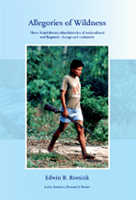 This article is a short introduction to the book “Allegories of Wildness, three Nambikwara ethnohistories of sociocultural and linguistic change and continuity”, published by Rozenberg Publishers. Here I summarize very concisely the historical trajectories that are dealt with in the book but here I also make some reference to later developments. The original research for this book occurred in the years 2000-2001. It took place within a Nambikwara Research Project led by Prof. Dr. W.L.M. Wetzels (VU University). Three Nambikwara languages were studied by linguists: Stella Telles set out to study Latundê and later included Lakondê; Gabriel Antunes studied Sabanê; Cristina Borella did fieldwork among the Sararê. I researched the ethnohistories and tried to look somewhat closer into processes of language shift, death or maintenance. It was financed by NWO – WOTRO (project number WAG 52-897). I want to thank both the project leader and the financing organization for their support.
This article is a short introduction to the book “Allegories of Wildness, three Nambikwara ethnohistories of sociocultural and linguistic change and continuity”, published by Rozenberg Publishers. Here I summarize very concisely the historical trajectories that are dealt with in the book but here I also make some reference to later developments. The original research for this book occurred in the years 2000-2001. It took place within a Nambikwara Research Project led by Prof. Dr. W.L.M. Wetzels (VU University). Three Nambikwara languages were studied by linguists: Stella Telles set out to study Latundê and later included Lakondê; Gabriel Antunes studied Sabanê; Cristina Borella did fieldwork among the Sararê. I researched the ethnohistories and tried to look somewhat closer into processes of language shift, death or maintenance. It was financed by NWO – WOTRO (project number WAG 52-897). I want to thank both the project leader and the financing organization for their support.
Edwin B. Reesink – Allegories of Wildness – Three Nambikwara ethnohistories of sociocultural and linguistic change and continuity – ISBN 978 90 3610 173 8 – 2010
You May Also Like
Comments
One Response to “An Introduction To Three Nambikwara Ethnohistories”
Leave a Reply
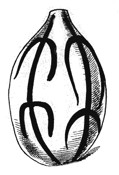
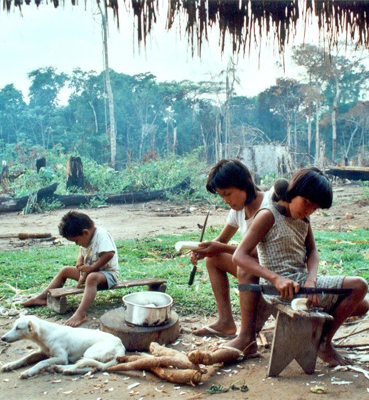

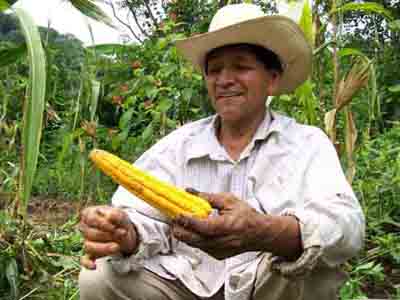




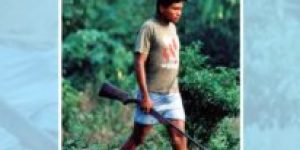

May 22nd, 2015 @ 12:08 am
I spent six week filming the Nambiquara in 1989 and my videos are now available. This article is very useful in my own case I need some help from linguists with the dialects.